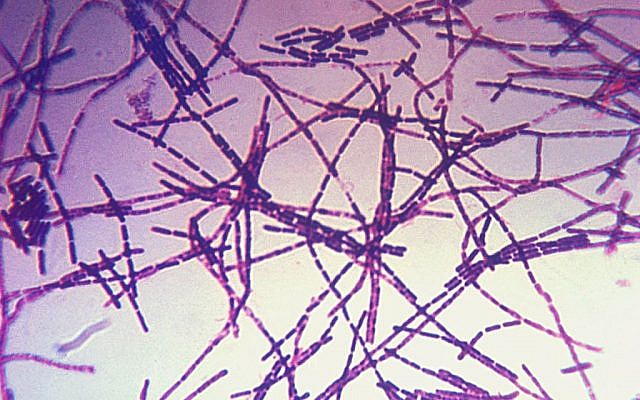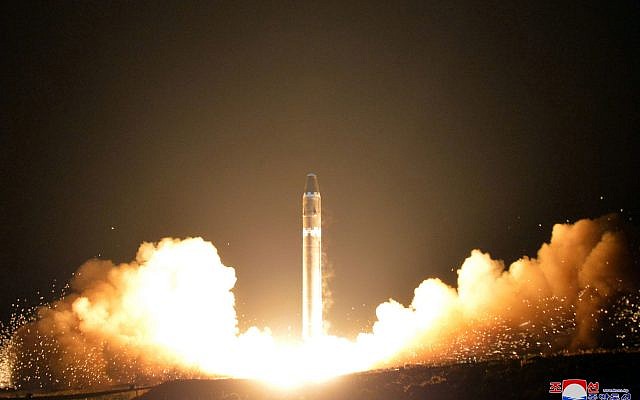Japanese newspaper says Pyongyang’s research focused on ensuring deadly anthrax spores will survive extreme heat during long-range missile strike

North Korea is carrying out tests toward arming its long-range missiles with deadly anthrax spores and other biological weapons, the Japanese Asahi newspaper reported Wednesday, citing a a South Korean intelligence source.
The source, who was not identified in the report, said that Pyongyang is conducting heat and pressure experiments to find ways of protecting biological agents in the intense conditions a warhead experiences during reentry. As long-range missile warheads plummet back from space through the atmosphere toward their targets, they can experience temperatures of over 7,000º C, the paper said.
An unconfirmed intelligence report suggested some of the tests have been successful.
The South Korean intelligence source assessed the North Koreans are looking at developing biological weapons as they do not yet have the ability to hit all of the US mainland with nuclear weapons.
On Monday US President Donald Trump released his first National Security Strategy, declaring that “North Korea is also pursuing chemical and biological weapons which could also be delivered by missile.”
According to the Asahi report, the US has known about North Korea’s anthrax research for a while. As a precaution, US troops serving in South Korea have been vaccinated against smallpox and anthrax since around 2004.
At the end of November, nuclear-armed North Korea test-fired a new ICBM, which it says brings the whole of the United States within range.

The isolated and impoverished North has staged six increasingly powerful atomic tests since 2006 — most recently in September.
The North has boasted that the Hwasong 15 ICBM it tested is capable of delivering a “super-large” nuclear warhead anywhere in the US mainland.
Analysts agree that the latest test showed a big improvement in potential range, but say it was likely achieved using a dummy warhead that would have been quite light.
They say a missile carrying a much heavier nuclear warhead would struggle to travel as far.
The North’s widely-condemned nuclear and missile programs have made significant progress under leader Kim Jong-Un, who has overseen four nuclear tests and dozens of missile launches since taking power in 2011.
A months-long nuclear standoff between Kim and Trump — as well as their trading of personal insults — has fueled concerns of another conflict, more than six decades after 1950-53 Korean War that left much of the peninsula in ruins.
But even some Trump advisers say US military options are limited when Pyongyang could launch an artillery barrage on the South Korean capital Seoul — only around 50 kilometers (30 miles) from the heavily-fortified border and home to 10 million people.
As reported by Vos Iz Neias
